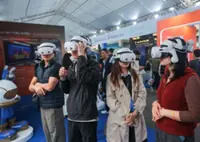How will the effective sharing of key information make a future smart city more liveable? — Image by Freepik
The term smart city gets thrown about a fair bit these days, but have you ever wondered about what needs to be in place before a city becomes, well, smart?
Even though Malaysia is now moving speedily towards a truly connected future, one issue stands in the way of establishing smart cities here.
Already a subscriber? Log in
Save 30% OFF The Star Digital Access
Cancel anytime. Ad-free. Unlimited access with perks.





